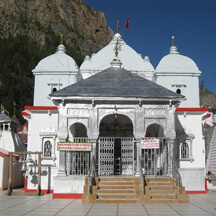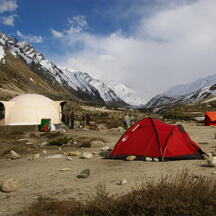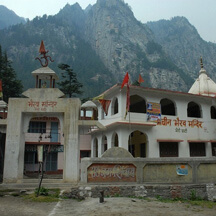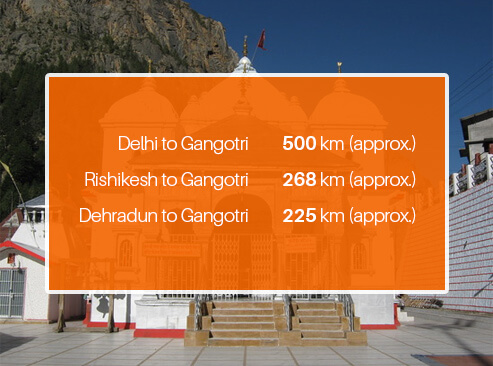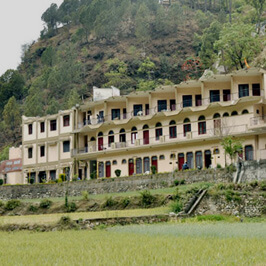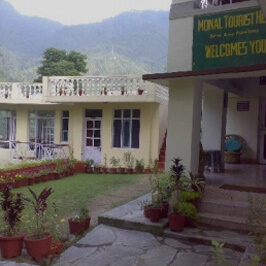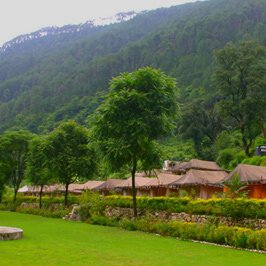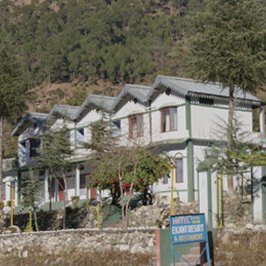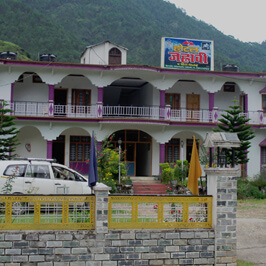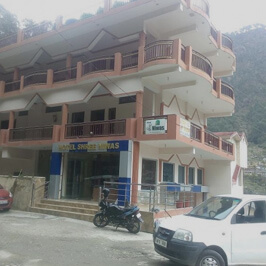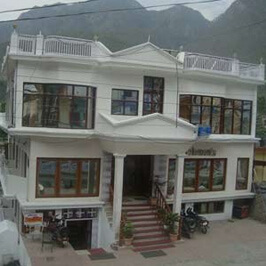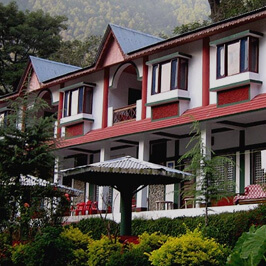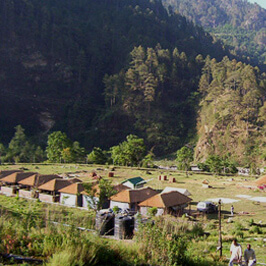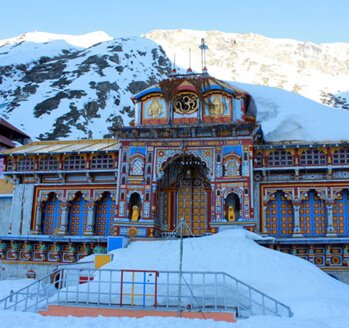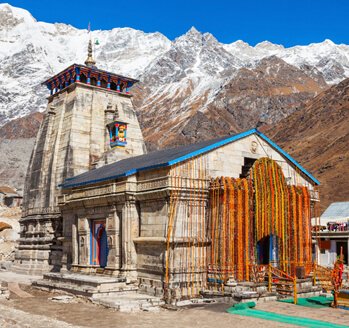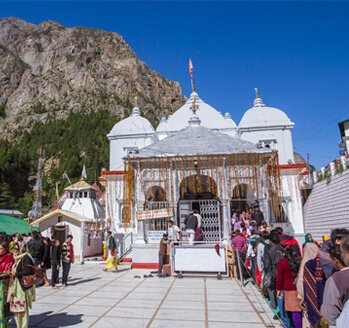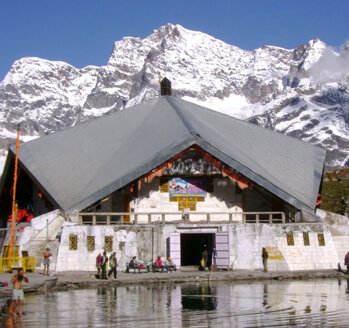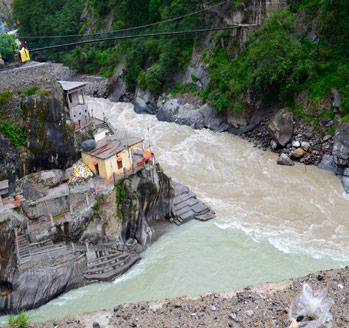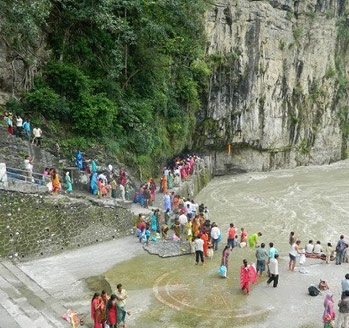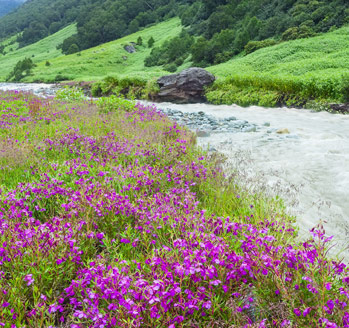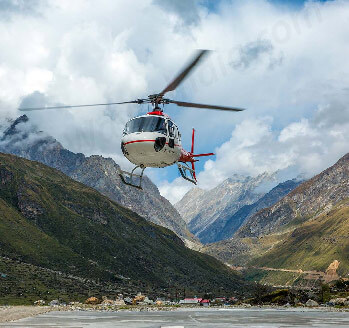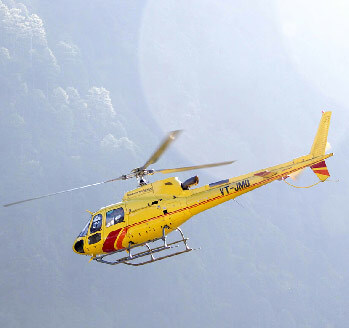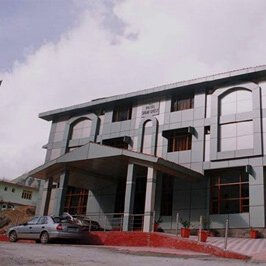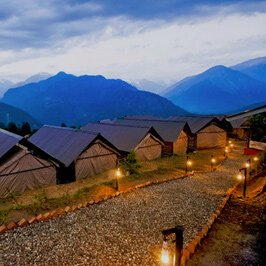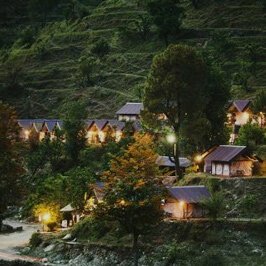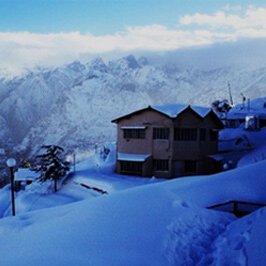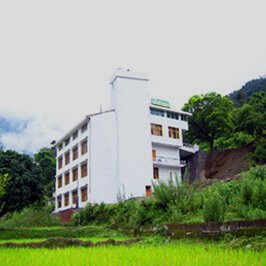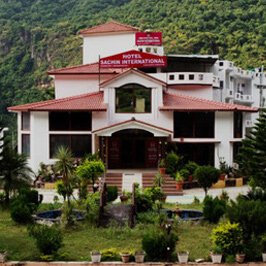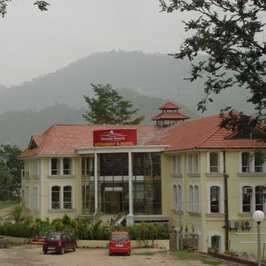Penance of Bhagirath
Going by the legends, it is said that King Sagara, the great grandfather of King Bhagirath slayed the demons on earth. In order to proclaim his supremacy, he decided to stage an Ashwamedha Yagna. During the yagna, a horse was supposed to be let loose to go on an uninterrupted journey across empires. In the course of events, Indra the supreme ruler feared that he might be deprived of his celestial throne if at all the yagna got complete. Using his celestial powers, he took away the horse and privately tied it in the ashram of Sage Kapila, who was seated in deep meditation.
As soon as King Sagara's agents realized that they had lost track of the horse, King allotted his 60,000 sons the task of tracing the horse. While the king's sons were on a hunt for the lost horse, they came across the spot where Sage Kapila was meditating. They found the horse tied next to him, out of fierce anger they stormed the ashram and accused the sage for stealing the hoarse. Sage Kapila's meditation got disrupted and out of fury he turned all the 60,000 sons into ashes just with his powerful glance. He also cursed that their souls would attain Moksha, only if their ashes get washed by the holy waters of River Ganga, which was then a river, seated in heaven. It is said that Bhagirath, the grandson of King Sagara in order to free his ancestors performed rigorous penance for a 1000 long years to please Ganga to come down to the earth. Finally his efforts bore fruit and River Ganga was pleased by his devotion and was ready to descend to earth.
Tale of River Ganga
Another legendary tale states that when River Ganga agreed to descend to earth in response to Bhagirath's prayers, its intensity was such that the entire earth would have got submerged under its waters. To save the planet earth from such demolition, Lord Shiva caught River Ganga in his locks. To please Lord Shiva, Bhagirath again meditated for a very long time. On seeing Bhagirath's immense devotion, Lord Shiva being pleased released River Ganga in the form of three streams one of which came on earth and came to be known as the Bhagirathi River. As soon as Ganga's water touched the ashes of the Bhagirath's ancestors, the 60,000 sons rose from eternal rest. The stone on which Bhagirath is believed to have meditated is known as the Bhagirath Shila which is located fairly close to the Gangotri Temple.
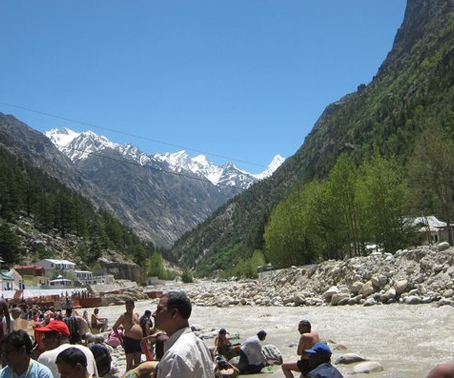
Mythologies behind the birth of River Ganga
It is said in one of the mythological tales that Ganga, was a vivacious beautiful woman who was born out of Lord Brahma's Kamandalu (water vessel). There are two accounts of her birth. One proclaims that Lord Brahma while washing Lord Vishnu's feet had collected this water in his Kamandalu after Lord Vishnu had freed the universe from demon Bali in his rebirth as Vaman.
Another legend states that Ganga came down to earth in the form of a human and married an ancestor of the Pandavs of the Mahabharat, King Shantanu. She is believed to have yielded seven sons who were thrown into the river by her and the reasons behind this are unexplained. Her eighth child, Bheeshma, was spared due to the intervention of King Shantanu. Ganga left him. Bheeshma is the one who later played a very crucial role throughout Mahabharata, the grand epic.








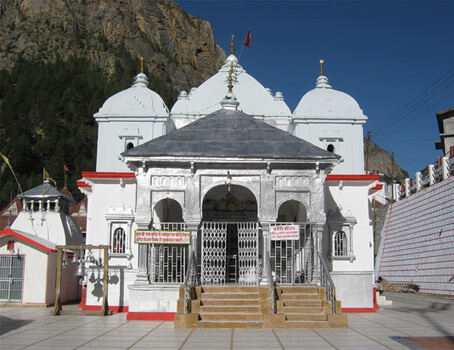 Gangotri Dham, located at the height of 3,100 meters (approx.) on the Himalayan range in Uttarkashi district of Uttarakhand, holds a very special place in the hearts of Hindus. It is one of the four sacred and important pilgrimage sites of Chota Char Dham Yatra in Uttarakhand. Amid all the natural beauty and grace which the mountains and altitude of the place affords, what makes Gangotri one of the holiest places is its intimate connection with River Ganga (the Ganges).
Gangotri Dham, located at the height of 3,100 meters (approx.) on the Himalayan range in Uttarkashi district of Uttarakhand, holds a very special place in the hearts of Hindus. It is one of the four sacred and important pilgrimage sites of Chota Char Dham Yatra in Uttarakhand. Amid all the natural beauty and grace which the mountains and altitude of the place affords, what makes Gangotri one of the holiest places is its intimate connection with River Ganga (the Ganges).
